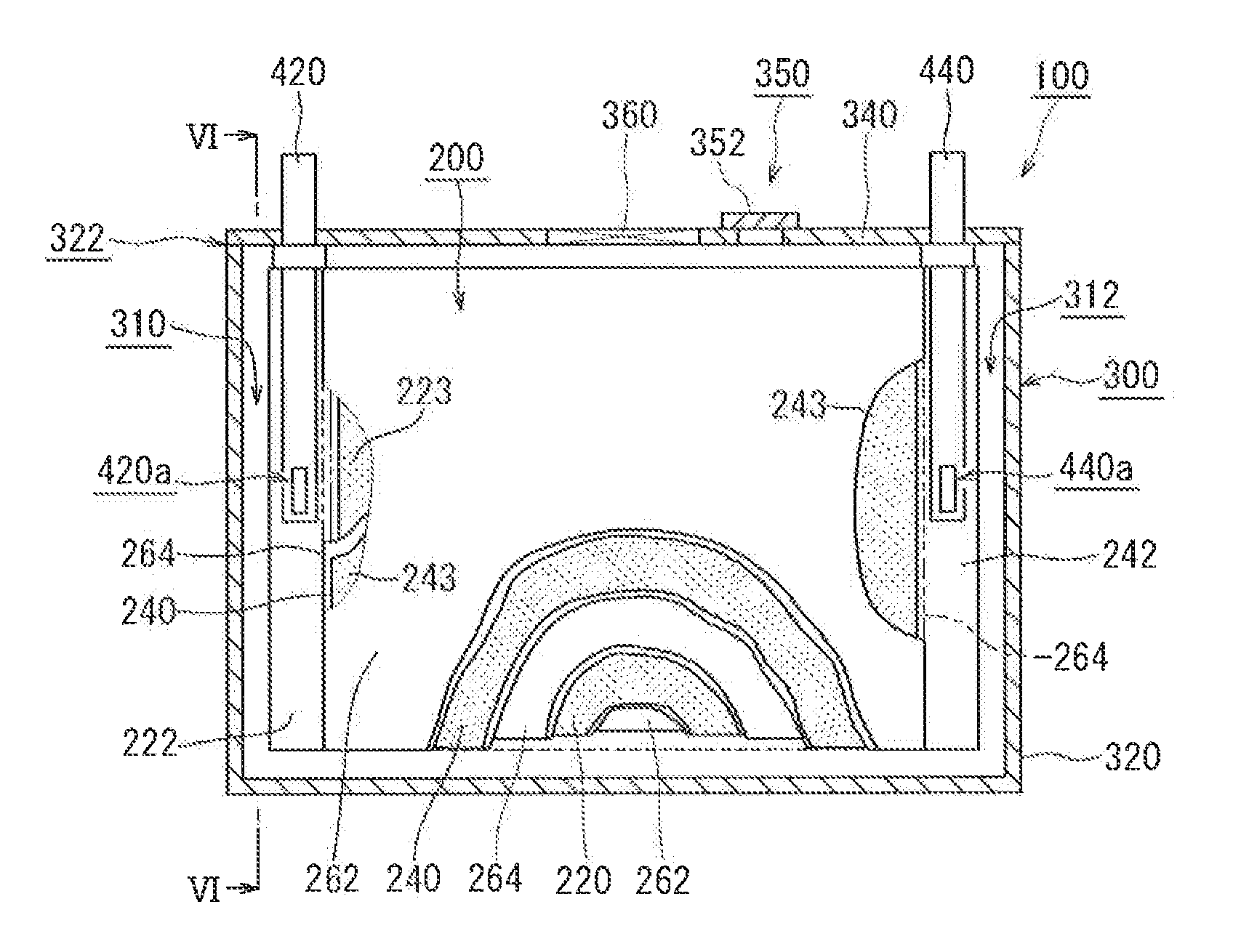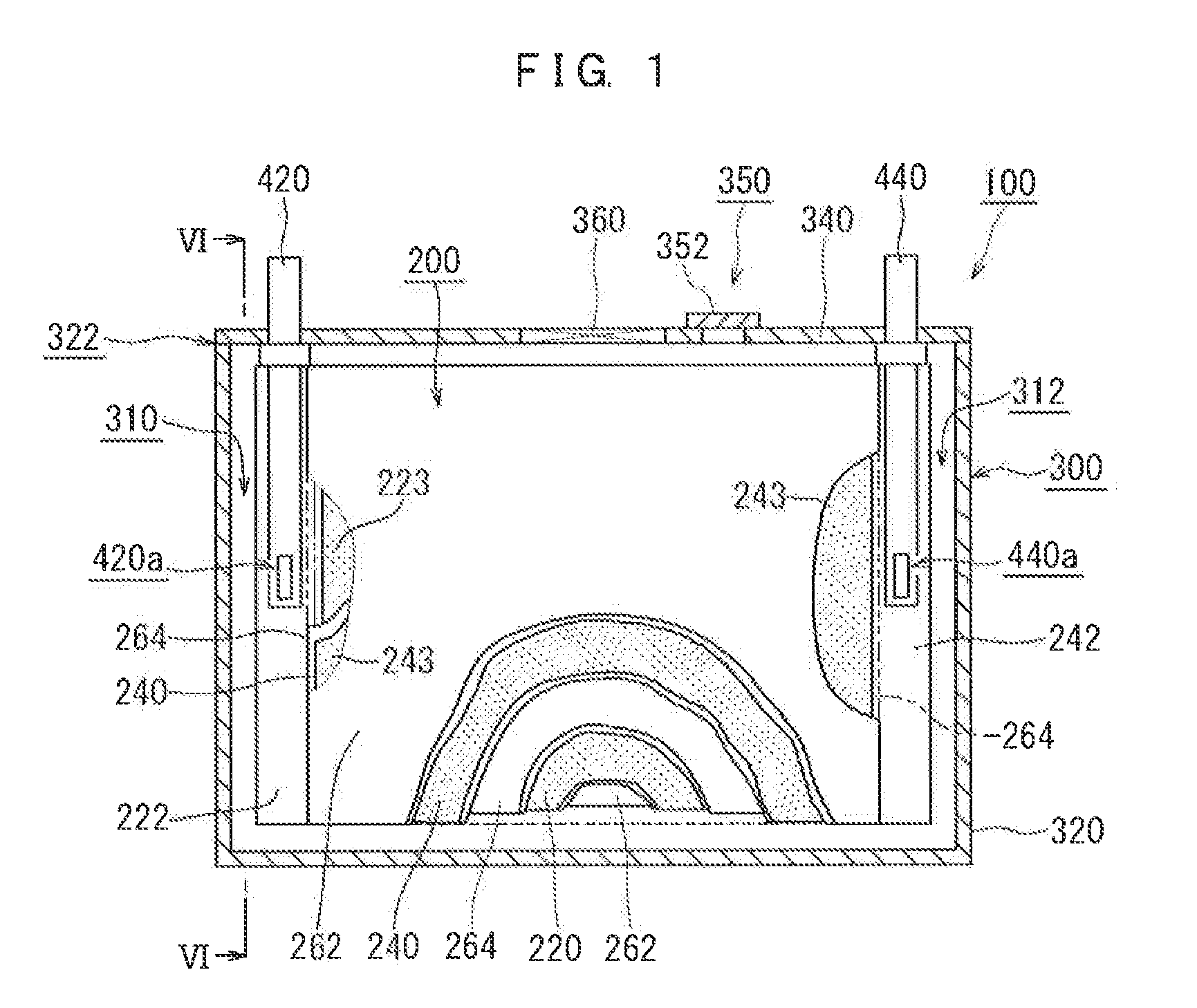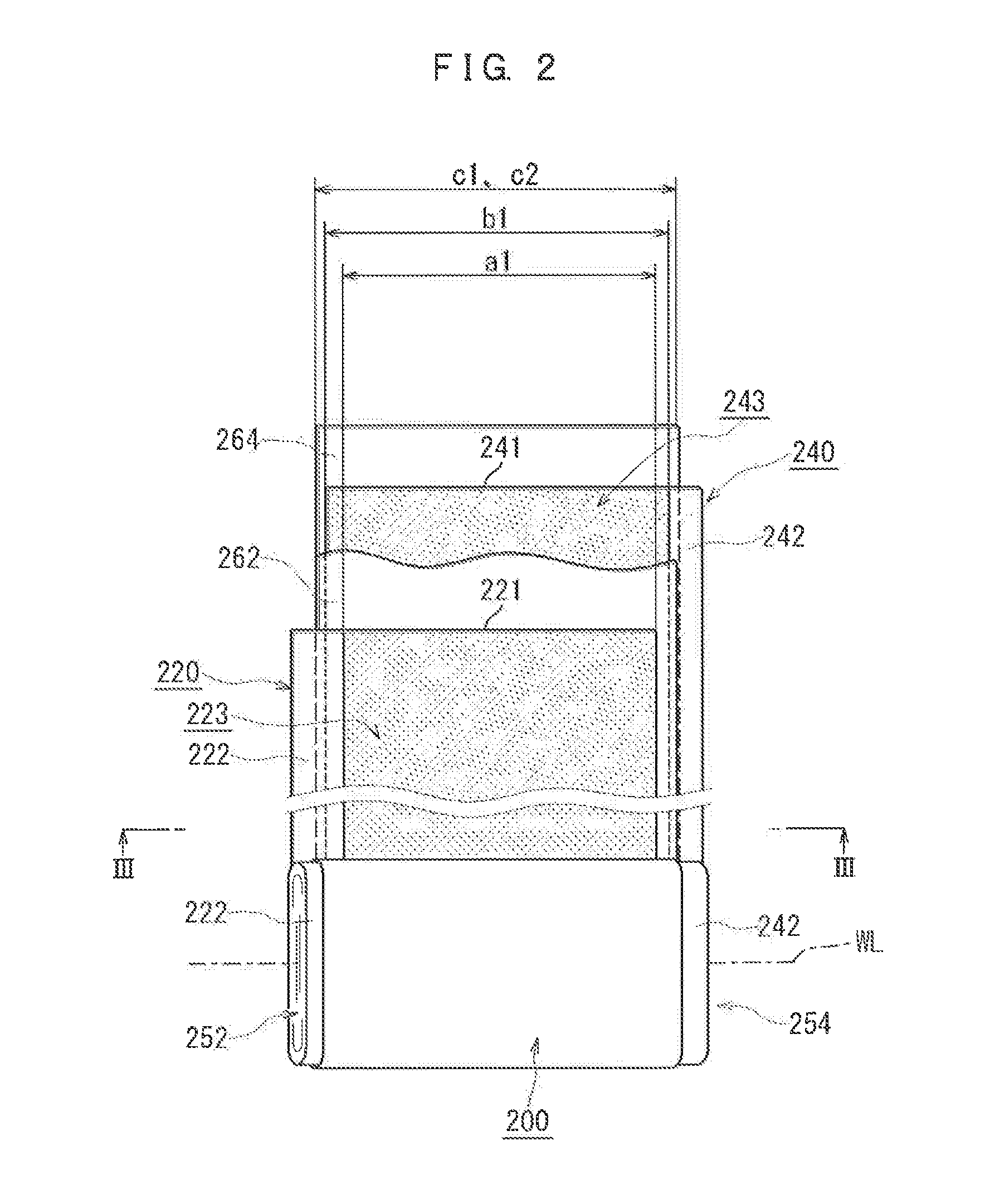Lithium-ion secondary battery
a secondary battery and lithium-ion technology, applied in the direction of batteries, sustainable manufacturing/processing, cell components, etc., can solve the problem of limiting the rate of ions discharging to the inside of the positive electrode active material, and achieve the effect of reducing the number of batteries used to secure a necessary amount of energy and cos
- Summary
- Abstract
- Description
- Claims
- Application Information
AI Technical Summary
Benefits of technology
Problems solved by technology
Method used
Image
Examples
Embodiment Construction
[0024]First, an example of a structure of a lithium-ion secondary battery will be described. Subsequently, while referring to this structure example as appropriate, a lithium-ion secondary battery according to an embodiment of the present invention will be described. Members and portions that produce same effects are denoted by same reference characters as appropriate. In addition, it will be recognized that the respective drawings have been schematically rendered and therefore may not necessarily reflect actual elements shown. The respective drawings merely show one example and do not limit the present invention thereto unless specifically mentioned otherwise.
[0025]FIG. 1 shows a lithium-ion secondary battery 100. As shown in FIG. 1, the lithium-ion secondary battery 100 comprises a wound electrode body 200 and a battery case 300. FIG. 2 is a diagram showing the wound electrode body 200. FIG. 3 shows a cross-section taken along line III-III in FIG. 2.
[0026]As shown in FIG. 2, the w...
PUM
 Login to View More
Login to View More Abstract
Description
Claims
Application Information
 Login to View More
Login to View More - R&D
- Intellectual Property
- Life Sciences
- Materials
- Tech Scout
- Unparalleled Data Quality
- Higher Quality Content
- 60% Fewer Hallucinations
Browse by: Latest US Patents, China's latest patents, Technical Efficacy Thesaurus, Application Domain, Technology Topic, Popular Technical Reports.
© 2025 PatSnap. All rights reserved.Legal|Privacy policy|Modern Slavery Act Transparency Statement|Sitemap|About US| Contact US: help@patsnap.com



